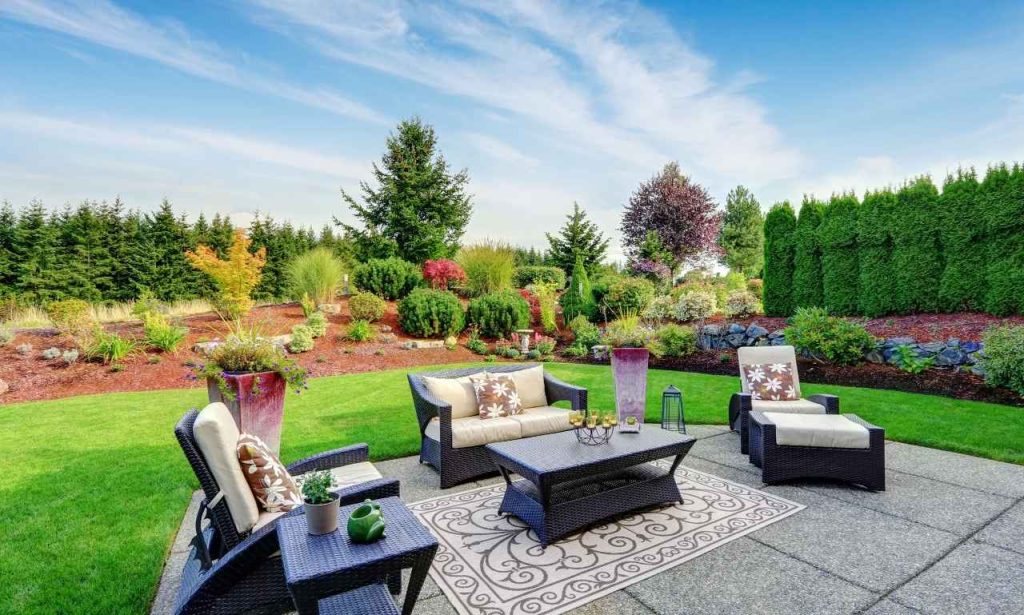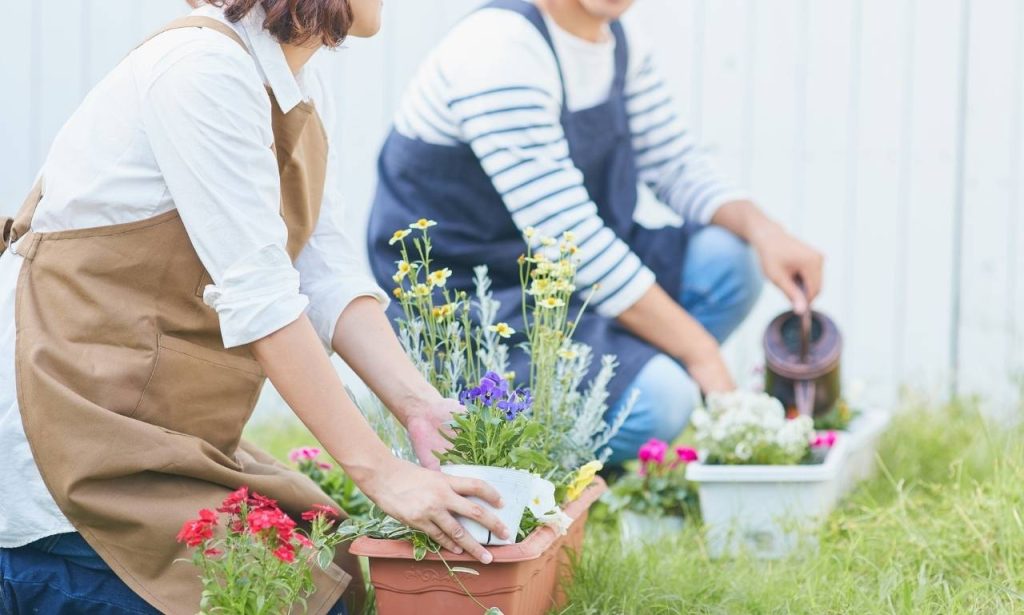My backyard used to be nothing special. Just a patch of grass with a few random plants. Nothing worth showing off to friends or family. But everything changed when I decided to transform it. Creating your dream backyard isn’t just about aesthetics. It’s about crafting a space that feels like you. A place where memories are made and stress melts away. Your perfect backyard should reflect your lifestyle and needs. Some want a play area for kids. Others need a Zen garden for meditation. Many desire an entertainment space for weekend barbecues. This guide will walk you through the entire process. From initial planning to adding those final touches that make a backyard truly special. Let’s get started on your backyard transformation journey.
What Makes a Great Backyard?

Great backyards balance beauty, function, and personal style. They serve as extensions of your home, not just leftover space. They work with nature rather than against it.
The best backyards feel like they belong to you. They match your home’s architecture and reflect your personality. They solve problems while creating joy.
Weather patterns matter in backyard design. Sun exposure, rain drainage, and wind patterns should guide your choices. Working with these natural elements saves money and frustration later.
A truly great backyard changes with the seasons. Spring brings blooms, summer offers shade, fall shows color, and winter reveals structure. Planning for all seasons ensures year-round enjoyment.
Successful backyards also consider maintenance needs. Low-maintenance options exist for busy homeowners. High-maintenance features should be worth the time investment.
How Do I Decide What to Do With My Backyard?
Start by listing your needs and wants. Do you need space for kids to play? Want an area for outdoor dining? Love gardening? Write everything down.
Next, consider your budget honestly. Backyard projects can range from hundreds to thousands of dollars. Set a realistic number before falling in love with expensive ideas.
Analyze your yard’s existing conditions. Note sunny and shady spots. Check soil quality and drainage issues. Identify any problem areas that need addressing.
Think about your local climate. Desert dwellers need shade and water-wise plants. Rainy regions benefit from covered areas and proper drainage. Work with your environment, not against it.
Research local regulations before planning. Some neighborhoods have rules about fence heights, water features, or structures. Better to know now than after construction begins.
Consider your home’s architecture too. A backyard should complement your house style. A sleek modern yard might look odd next to a traditional cottage home.
Finally, be honest about maintenance time. Beautiful gardens require regular care. Water features need cleaning. Choose elements that match your willingness to maintain them.
How Do I Turn My Backyard Into an Oasis?
Creating a backyard oasis starts with a vision. Picture your ideal outdoor space. Maybe it’s a tropical retreat or an English garden. This vision guides all decisions.
Water features add instant tranquility to any space. Even small fountains create soothing sounds that mask traffic noise. Moving water attracts birds and butterflies too.
Comfortable seating transforms any yard into a retreat. Choose weather-resistant materials that feel good. Add pillows and throws for extra comfort and color.
Privacy screens help create that true oasis feeling. Lattice panels, tall grasses, or bamboo can block unwanted views. They also create a sense of enclosure and safety.
Lighting extends your outdoor enjoyment into evening hours. Mix practical path lights with ambient string lights. Uplights on trees create dramatic nighttime scenes.
Plants should engage all senses in an oasis. Choose varieties with interesting textures, colors, and scents. Plan for different blooming seasons to maintain interest year-round.
Don’t forget about sound in your oasis design. Wind chimes, rustling grasses, and water features create pleasant audio backgrounds. These elements work together to block urban noise.
Designing Your Backyard Garden Landscape and Outdoor Living Space
Successful backyard design starts with good planning. Map your yard’s dimensions on paper or use design software. Include existing features you plan to keep.
Consider traffic patterns through your yard. Create clear paths between key areas. These paths should feel natural and convenient for daily use.
Balance hardscape and softscape elements. Patios and decks provide structure. Plants add life and soften hard edges. Neither should overwhelm the other.
Scale matters tremendously in backyard design. Furniture should fit your space without crowding it. Plants should mature to appropriate sizes for their locations.
Color creates mood in outdoor spaces. Cool blues and purples feel calming. Warm reds and oranges energize areas. Choose a palette that supports your yard’s purpose.
Texture adds visual interest even when flowers aren’t blooming. Mix smooth stones with rough bark. Pair feathery grasses with broad-leaved plants. Contrast creates drama.
Create specific zones within your backyard
Zoning transforms chaotic yards into organized retreats. Think of your yard as several outdoor rooms. Each serves a different purpose but connects to the whole.
Dining zones need firm, level surfaces for tables and chairs. They should be convenient to the kitchen. Consider adding shade for comfortable daytime meals.
Lounging areas benefit from comfortable seating and side tables. They should feel somewhat sheltered and private. Morning or afternoon shade makes them more usable.
Play areas require safe surfaces and visibility from the house. Natural play elements like logs and boulders encourage creative play. Leave open space for running games.
Growing zones might include raised vegetable beds or cutting gardens. These should get appropriate sun for their purpose. Keep them accessible for easy maintenance.
Transition areas between zones matter too. Use changes in materials or short plant groupings. These subtle boundaries help organize space without walls.
Unify different zones with thoughtful design and color palettes
Repeated elements create cohesion across different yard zones. Use similar materials or colors throughout. This repetition helps the eye move smoothly across spaces.
Consistent hardscape materials unify diverse areas. The same stone might appear in a path, wall, and fire pit. This repetition creates a sense of intentional design.
Color themes work across plant selections too. Choose a limited palette for flowers and foliage. This restraint creates harmony even with varied plant types.
Furniture should share some design elements across zones. Completely different styles can make your yard feel disjointed. Look for complementary pieces.
Lighting fixtures can serve as unifying elements. Similar styles throughout the yard create cohesion. They also ensure consistent light quality across spaces.
Containers and planters tie areas together effectively. Use similar styles or colors throughout your yard. They create visual stepping stones between different zones.
Choose the right plants
Plant selection can make or break your backyard design. Start with trees that provide structure and scale. They’re the backbone of any landscape.
Native plants thrive with minimal care in your area. They support local wildlife and resist local pests. Research natives appropriate for your yard conditions.
Consider all seasons when selecting plants. Spring bloomers fade quickly. Plan for summer flowers, fall color, and winter interest too. Aim for year-round appeal.
Group plants with similar water needs together. This practice, called hydrozoning, saves water and prevents over-watering some plants while under-watering others.
Plant for maturity, not current size. That cute three-gallon shrub might grow into a ten-foot monster. Research mature dimensions before choosing locations.
Layer plants by height for maximum impact. Tall background plants, mid-height fillers, and low edging plants create depth. This approach mimics natural plant communities.
Don’t overcrowd your yard
Open space remains crucial in good backyard design. Empty areas rest the eye and highlight special features. They also provide necessary room for movement and activities.
Most beginners plant too densely. They worry about bare spots. But plants grow quickly and soon crowd each other out. Leave proper spacing between plants.
Calculate mature plant sizes when planning. That one-gallon perennial might spread three feet wide eventually. Plan for full-grown dimensions, not nursery sizes.
Overcrowding creates maintenance headaches down the road. Plants compete for water and nutrients. Disease spreads more easily in cramped conditions. Pruning becomes difficult too.
Pathways need breathing room as well. Allow comfortable walking space between plantings. Nobody enjoys getting wet from overgrown plants after rain.
Remember that some emptiness now means appropriate fullness later. Gardens evolve over time. Patience rewards you with healthier plants and easier maintenance.
Outfit your deck with planters

Deck planters soften hard surfaces and add life to seating areas. Choose containers that complement your deck style. Ensure they have drainage holes.
Weight matters for deck containers. Large pots filled with soil become extremely heavy. Check your deck’s weight limits before installing massive planters.
Choose appropriate plants for container life. Not all plants thrive in pots. Look for varieties suited to container growing and your sun exposure.
Mix plants with different growth habits in larger containers. Thrillers (tall plants), fillers (medium plants), and spillers (trailing plants) create dynamic arrangements.
Self-watering planters reduce maintenance on decks. These containers have water reservoirs that plants draw from as needed. They’re perfect for hot, dry areas.
Consider seasonal changes for deck plants too. Switch out annuals as seasons change. Add small evergreens for winter interest when summer flowers fade.
Conclusion
Creating your dream backyard takes time and thought. But the rewards are immense. A well-designed outdoor space becomes your personal sanctuary.
Start with good planning and realistic expectations. Work with your yard’s natural features rather than fighting them. Create distinct zones that serve your specific needs.
Add personal touches that make the space uniquely yours. Garden art, family heirlooms, or special plants add meaning. These elements transform a nice yard into your yard.
Remember that gardens evolve over years. Enjoy the process rather than rushing to a finished product. Your dream backyard becomes more meaningful through your ongoing involvement.
The perfect backyard finally gives your home the outdoor space it deserves. It creates room for living, playing, and connecting with nature. Start your backyard transformation today.
Also Read: How to Spring Clean Your Communication in 5 Easy Steps
FAQs
Costs vary widely based on size and features. Basic DIY projects might cost a few hundred dollars. Professional complete makeovers can exceed $50,000.
Simple projects may take a weekend. Complex landscapes often require months. Plan for installation in phases if time or budget is limited.
DIY works for basic projects. Professionals help with grading, drainage, and complex features. Consider hiring help for technical aspects while doing planting yourself.
Native plants, mulched beds, automatic irrigation, and hardscaping reduce maintenance. Choose dwarf varieties and slow-growing plants to minimize pruning needs.

